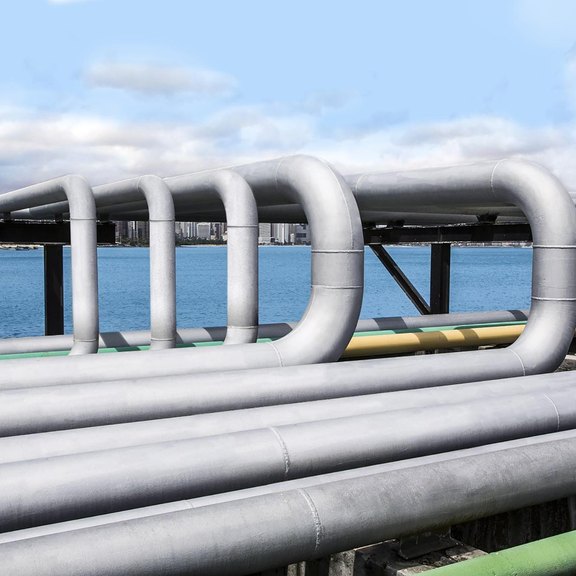Mannesmann made for cryogenic media
Safety even at the lowest temperatures.
Under the name of "Mannesmann made for cryogenic media", Mannesmann Line Pipe is using the highly advanced bainitic steel X8Ni9 for the first time in the production of HFI-welded steel pipes specifically designed for the transport of gaseous and liquefied media at ultra-low temperatures. The material is based on the ASTM A553 standard for a quenched and tempered 8-9% nickel steel. It has already demonstrated its capabilities in various applications, e.g. as the inner pipe in a chamber pipe system for transporting LNG and in tanks used to store LNG, even at temperatures as low as minus 196 °C. Other areas of application can be found in power plant technology, chemical plants and in plant engineering. The material can be individually adapted to the application in question.
Would you like more information?
Click here for details of our data protection policy.
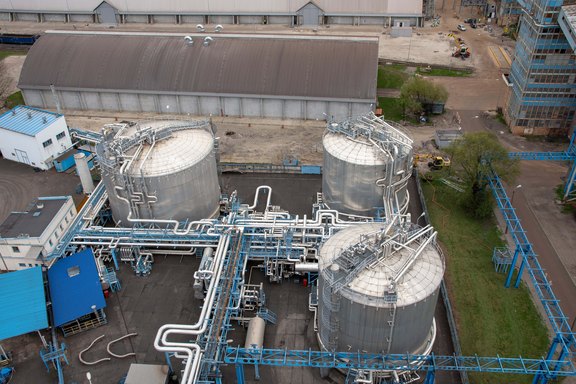
For use at minus 162 °C and lower
X8Ni9 is noted for its high toughness even at ultra-low temperatures. This makes the material ideal, among other things, for the construction of tanks and pipelines for the transport of liquefied natural gas (LNG). LNG is one of the energy sources of the future.
When natural gas is liquefied to minus 162 °C and lower, the gas volume is reduced by a factor of 600. This means that a lot of energy can be transported in minimum volume.
Whether transport is by ship for areas not yet connected to the pipeline network or over land, steel line pipes "Mannesmann made for cryogenic media" are the perfect choice if large quantities of LNG have to be transported. The pipes are available across the entire size range from 114.3 to 610 mm at short notice, even in larger quantities.

Highly cost-effective
Steel pipes "Mannesmann made for cryogenic media" combine high cold toughness with outstanding strength. Due to their relatively low alloy content, the pipes are a more economic and eco-friendly solution than cryogenic stainless steels. Our pipes ensure the safe transport of liquefied gas under extreme conditions of minus 162 °C and lower.
“Mannesmann made for cryogenic media” in tests
One example of the safe transport of liquid media at ultra-low temperatures is the multi-pipe system from FW-FERNWÄRME-TECHNIK GmbH in Celle, Germany. This efficient triple-pipe system has had decades of successful use in industry. For use in the ultra-low temperature range, the system was assessed in a prototype test. In this instance, "Mannesmann made for cryogenic media" was used for the inner pipes.
During the 3-year test phase, it was proven that the pipe system satisfied all the requirements for transport at temperatures of minus 196 °C. At these low temperatures, the inner pipes showed a toughness of 80 J, while the yield strength was roughly 600 MPa. The pipes have much higher strength values than the stainless steel used to date, which means that higher operating pressures can be realized with comparatively small wall thicknesses. "Mannesmann made for cryogenic media" from Mannesmann Line Pipe has thus passed the endurance test.

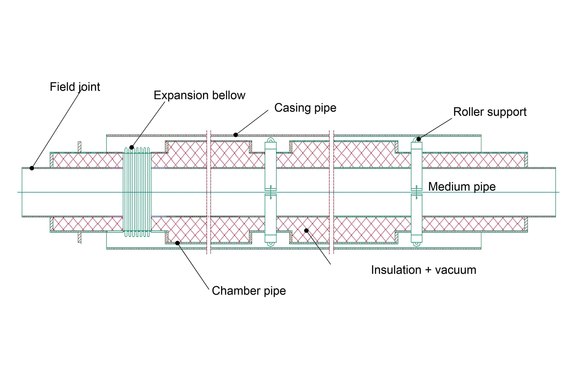
FW-FERNWÄRME-TECHNIK’s triple-pipe system with a chamber for the transport of fluids at cryogenic temperatures.
Sound joints
Of crucial importance in addition to the steel pipe itself are the pipe joints. The choice of the right electrode is decisive for the production of the pipe welds. In the test, the best welding results were achieved with NIBAS 625-IG [S Ni 6625 (NiCr22Mo9Nb)] Ni-based electrodes from Böhler Welding.
No less important is the welding technique employed. The fabricator has to be satisfied that his calculation, design and working methods are appropriate for the material, state-of-the-art and suitable for the intended use.
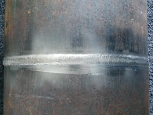
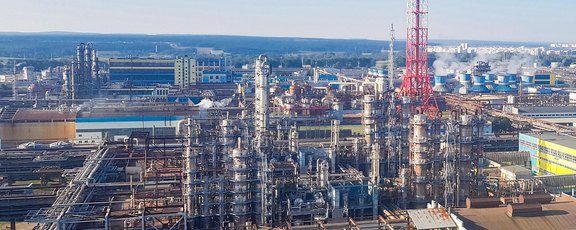
Conclusion
Steel pipes "Mannesmann made for cryogenic media" are optimally tailored to the needs of our customers, both economically and environmentally. They have a wide range of applications: in addition to the transport of LNG, for example, they can also be used in power plant technology, chemical plants and plant engineering. The material can be individually adapted to the application, even at less low temperatures, e.g. for the transport or storage of liquid ammonia at below minus 33 °C.
Give us a call. We would be happy to make you an offer that meets your needs.
Your sales contact

Michael Kleinsorge
Phone +49 271 691-422
michael.kleinsorge@mannesmann.com
Your contact for technical matters

Dr. Holger Brauer
Phone +49 2381 420-447
holger.brauer@mannesmann.com
Technical Information
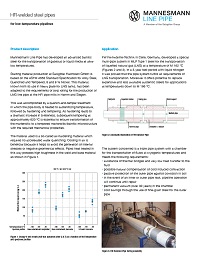
English Version
Publications
HFI-geschweißte Rohre für Anwendungen im Tiefsttemperaturbereich (German)
Brauer, H.; Bick, M.; Meyer, F.; 3R international 1 (2018) S. 53-57HFI-geschweisste Stahlrohre für Tieftemperatur-Rohrleitungen (German)
Brauer, H.; Veit, M.; Harder, V.; Grube, L.; Meyer, F.; 3R international 6 (2016), S. 80/7HFI welded Steel pipes for low temperature pipelines
Brauer, H.; Veit, M.; Harders, V.; Grube, L.; Meyer, F.; Proceedings of the 11th International Pipeline Conference September 26 - 30, 2016, Calgary, Alberta, Canada
